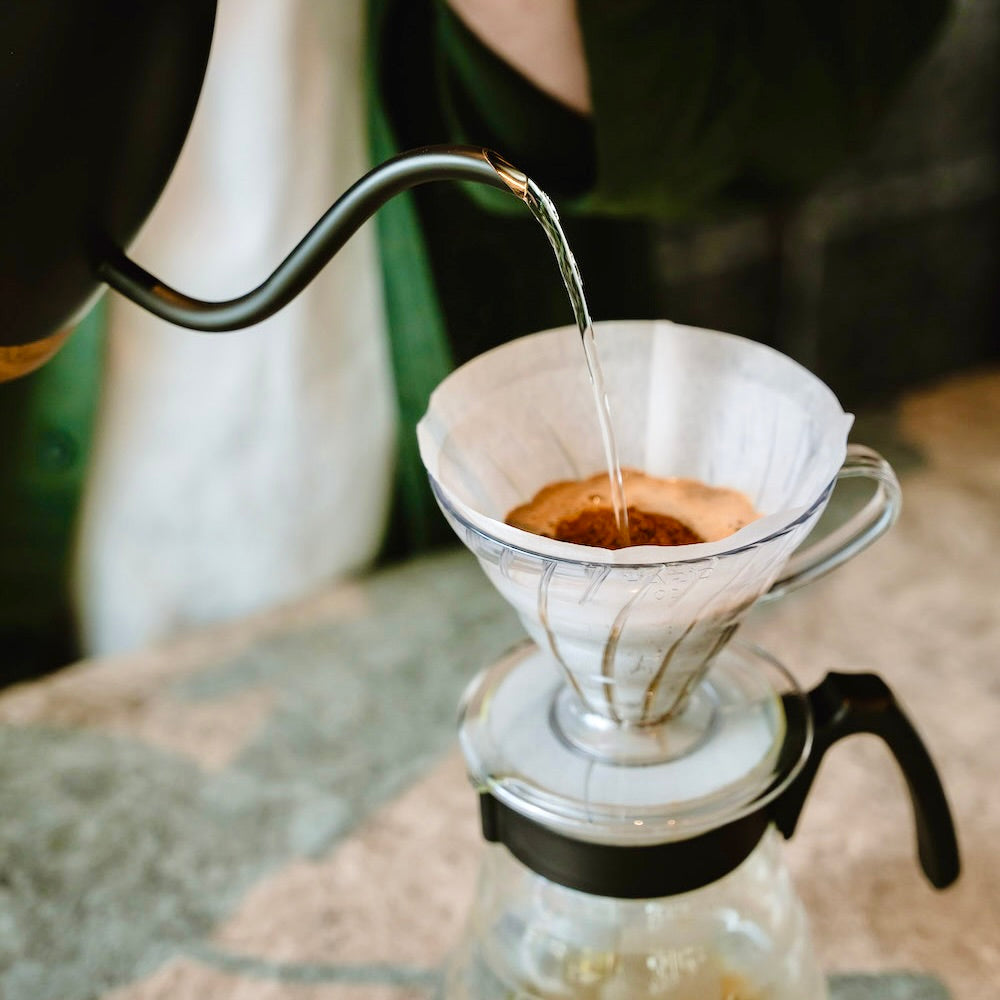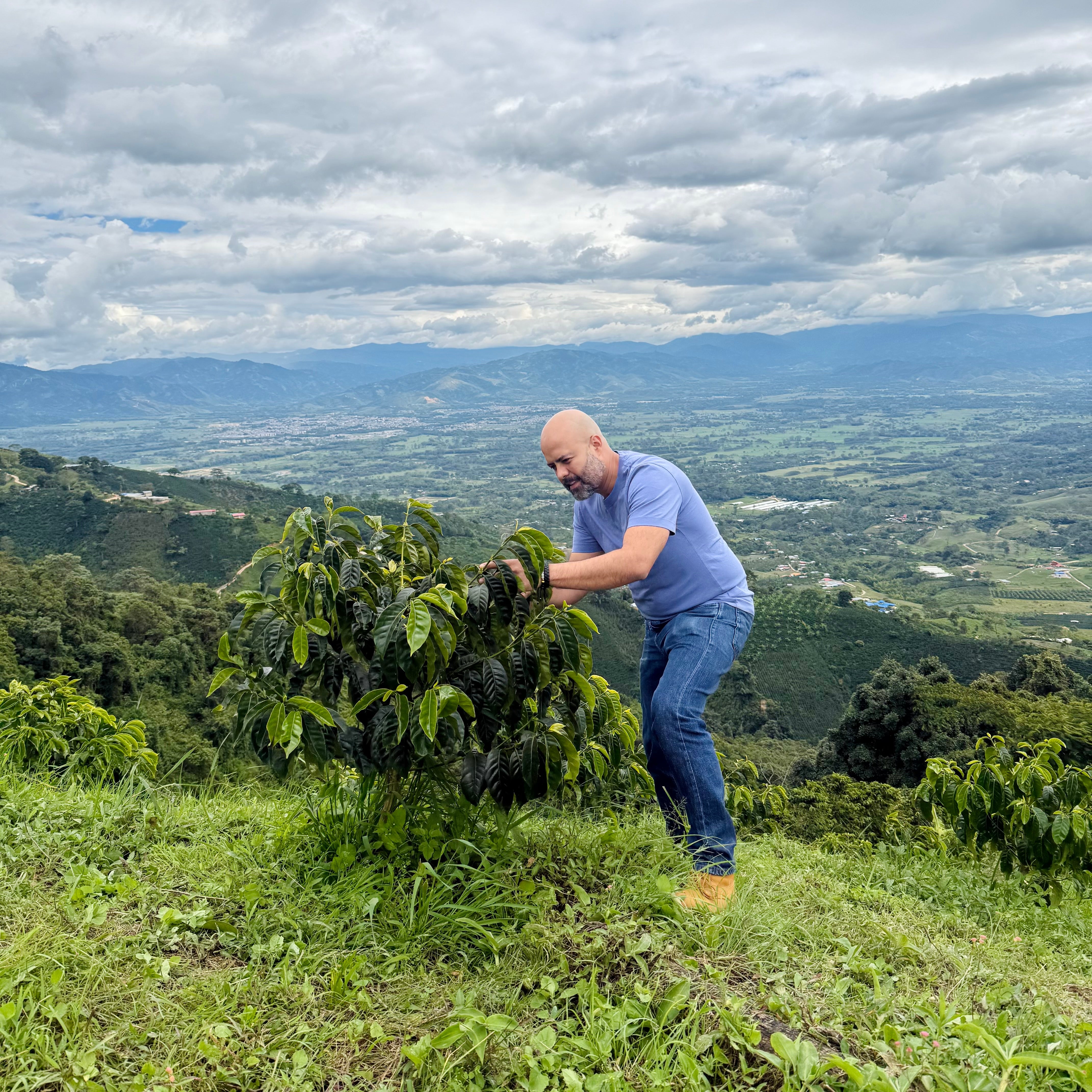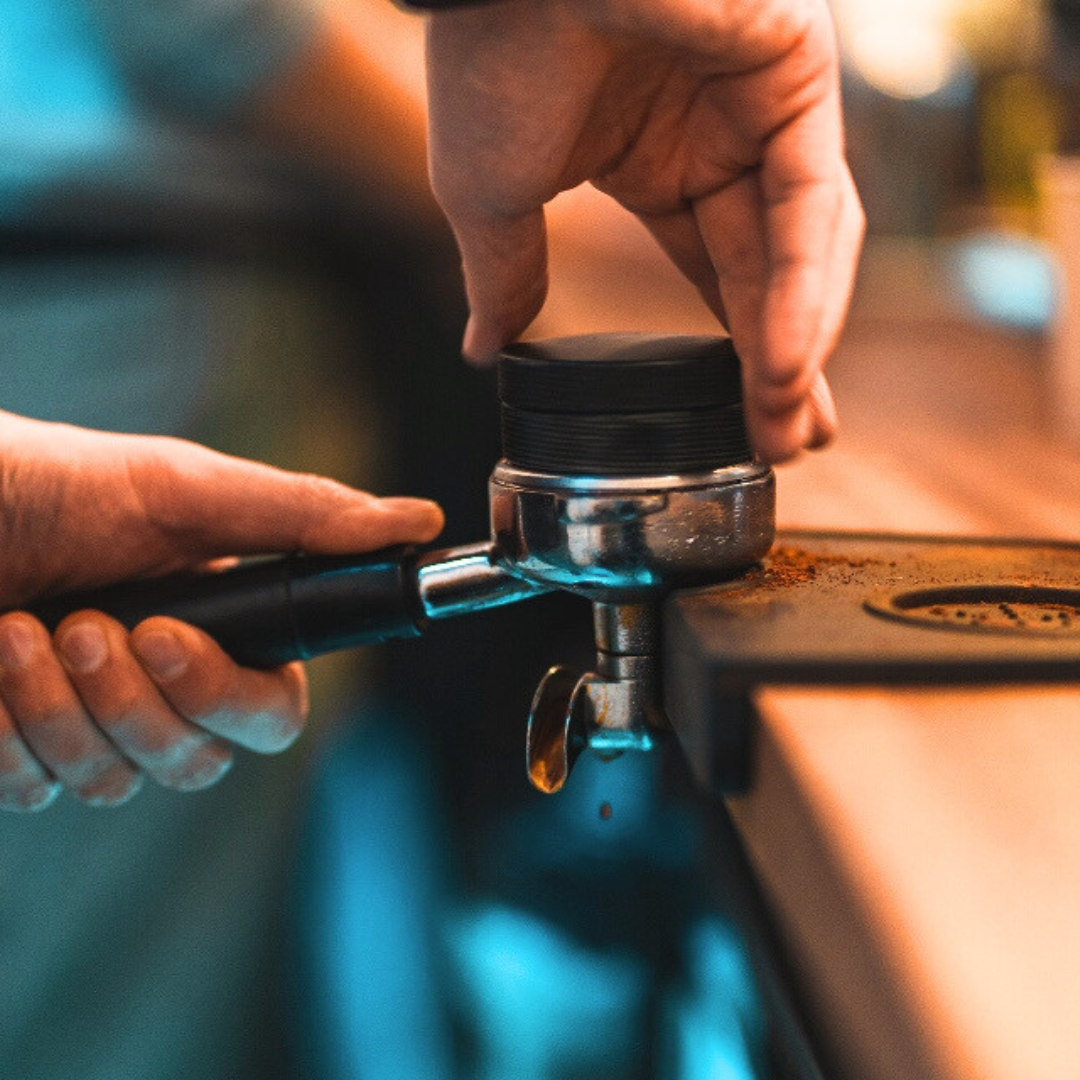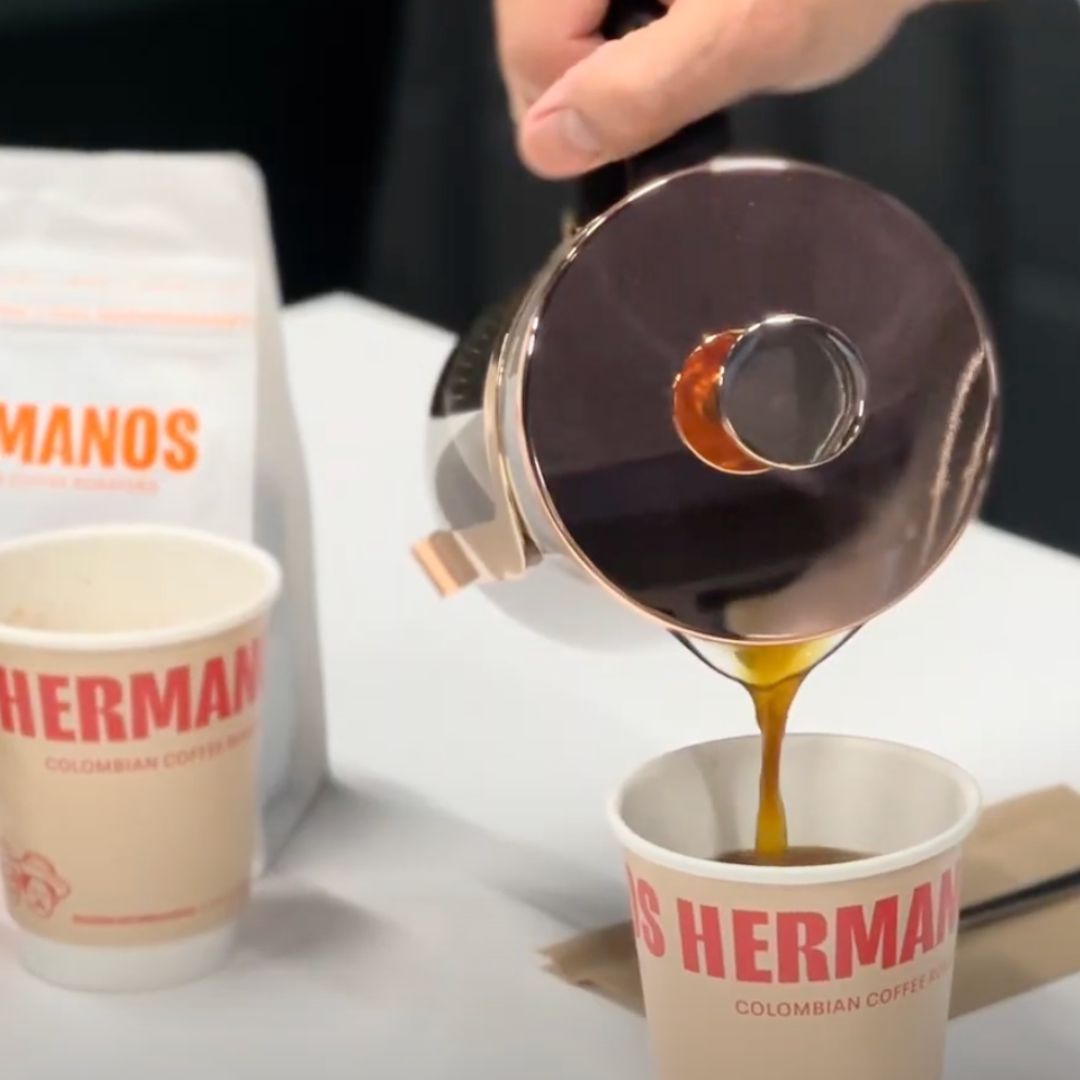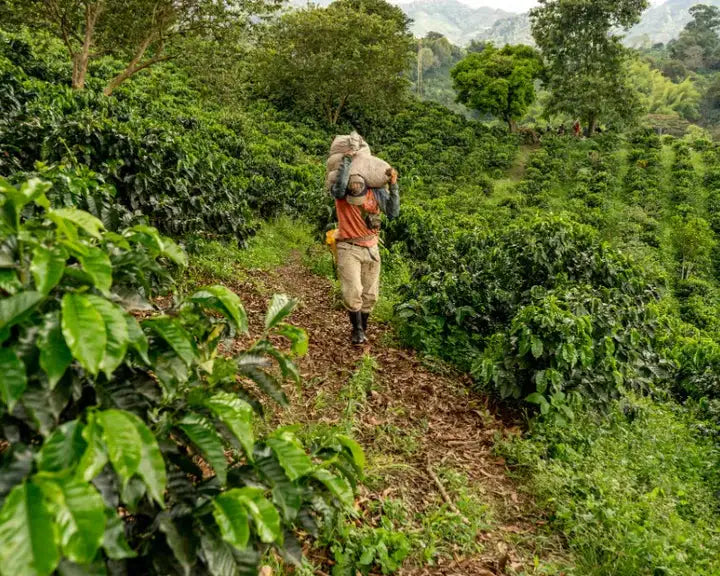There are three main coffee processes: natural, washed, and honey. Each of them has a part to play in how your morning cup of coffee tastes and smells. But what is the methodology behind each of them, and how exactly do they impact the bean?
We dive into the natural processing method, and see how it weighs up against the washed and honey processes.
The Basics of Coffee Processing

To put it simply, coffee processing describes the process of separating the coffee bean, or seed, from the rest of the fruit. A coffee cherry is made up of the pulp, skin, fruit, the mucilage and a few other elements, all of which need to be removed before the bean can be dried and roasted.
In other words, it is an essential part of the journey that creates the chocolatey brown coffee beans that we all recognise. There are multiple ways to go about coffee processing, with the primary three being the natural, washed, and honey methods.
The Natural Method
Natural coffee processing is one of the world’s oldest methods and is favoured by many coffee growers. What sets it apart from other methods is that the entire coffee cherry is dried, with the bean still attached to the rest of the fruit, causing a fermentation process to occur and impart natural sugars and fruit flavours to the bean.
The coffee is dried on large raised beds or patios for weeks at a time, and needs to be carefully monitored and turned over at regular intervals. They also need to be protected from the elements, and so will be covered or sheltered in the event of rain or high winds.
The Washed Method
Unlike natural processing, the washed method involves removing each part of the coffee cherry from the bean, by first putting it through a de-pulping machine and then placing it in a fermentation tank, before it is dried.
With the honey and natural methods, some of the flavour of the bean comes from the outside of the fruit, whereas washed method coffee relies only on the qualities of the bean itself. As you can imagine, having optimal climate and drying conditions is essential in making sure that the flavour of the coffee is able to shine through.
The Honey Method
Honey coffee processing is something of an amalgamation between the washed and natural methods. Once the coffee has been picked, it is de-pulped, but then left out to dry without having the mucilage removed. The method is more experimental than its counterparts, and the final product shares elements from washed and natural processing.
Read Our Blog Post On Coffee Processing Methods Explained
How the Natural Coffee Process Works

As mentioned earlier, the natural process revolves around drying whole coffee cherries, rather than separating the seed from the pulp and mucilage or intervening with any machinery. This does not mean, however, that the coffee does not still undergo vigorous quality checks.
Before being dried, the coffee is sorted to remove any defective (over or under-ripe) cherries, and whilst being dried, the fruit is moved using a rake regularly to stop it from going rotten or bruising from laying on a raised bed or patio too long.
Whether coffee is dried using raised beds, tables, or patios depends entirely on the region and the preferences of the farm. Some coffee growers come up with innovative and weather-resistant ways to dry their coffee, such as Finca El Diviso in Huila, Colombia. The farmers here have amended the roof of their home so that it can be extended in and out, meaning they can dry their beans on it when the sun is out, and quickly pull it back in when it begins to rain.
Once dry, the coffee bean is finally removed from the rest of the cherry through a process called hulling, which is the final step of the journey before the beans leave the farm and can be shipped to roasters.
Read More About Coffee Drying In Huila, Colombia
Where is the Natural Method Most Common?
There are some regions of the world where the natural processing method is not only preferred, but necessary, due to dry weather conditions and lack of rain, such as parts of Yemen, Ethiopia, and Brazil. The climate in these areas leads to water scarcity, which refers to a lack of water that can be physically accessed and used. Water scarcity limits the types of processing methods that can be deployed, as farmers do not have the resources or facilities to process their coffee in any other way.
However, there are also coffee-growing countries all over the world that choose to use the natural method because it is arguably the oldest and most traditional way of processing coffee cherries.
For example, our Finca Las Flores coffee beans, from Tolima, Colombia, are the product of the natural process. Because Colombia is a country with such a varied climate and terrain, there are some regions where the natural drying method is the most logical. As well as it making sense from a practical point of view, farmers choose to use this process because of its reputation as being one of the oldest and most traditional ways of processing coffee. After all, if it’s been around for as long as it has, it must be for a reason!
Find Out More About The Role Of Origin On Coffee Flavour
The Benefits of the Natural Coffee Process

There are lots of benefits to the natural coffee process, which explains how it has endured such a long time. The primary factors that influence a farm’s decision for choosing this method include its longstanding history in the coffee farming industry and the impact that it can have on the final flavour of the coffee bean.
Flavour
Naturally processed coffees have distinctive flavours, which are often the subject of debate amongst specialty coffee lovers and baristas alike. Because a certain level of fermentation is bound to occur as a result of the coffee bean drying whilst attached to the rest of the cherry, the sugars and flavours of the fruit merge with the natural notes of the seed.
Although the taste of a coffee that has undergone the natural process will still differ vastly depending on region, climate, and other growing and processing decisions, what many have in common are flavours that can be described as ‘funky’ and ‘natural’.
Some natural processed beans are described as tasting very sweet and fruity, with notes of berries and tropical fruits, whereas others are said to have almost fermented, alcohol-adjacent notes, such as red wine.
Shop Our Natural Processed Coffee
Climate and Terrain
As mentioned, using the natural drying process is something of a necessity for coffee growers all over the world. In areas that lack water or experience low levels of rainfall and humidity, such as Brazil, Yemen, Ethiopia, and Costa Rica, conserving water by drying coffee cherries whole is a logical decision.
Environmental Factors
The cost on the environment is much lower when using the natural coffee process, because there is less reliance on water and energy usage, and equipment and machinery. Although the method poses its own challenges, the benefit it can bring not only to the flavour and end result of the coffee, but to the climate and the environment of the farm itself, is often worth the additional difficulties.
Tradition
Above all else, natural coffee processing is the method chosen by some farmers because it is tradition in the region they grow coffee in.
Although not many coffee-producing areas these days use the natural method, farms in parts of the world impacted by water scarcity preserve the tradition due to its necessity. You will find producers in other regions, such as Colombia, who use both experimental and interesting new methods, such as triple fermentation, and the natural method, which goes to show its perseverance.
Natural Coffee Processing — Potential Challenges

Whilst there is no denying that it is important to preserve the natural coffee process for its cultural and historical significance, there are some challenges that come alongside it, which deter many coffee growers from taking up the process.
The Issue of Logistics
The natural method is time-consuming and requires a lot of attention and skill, which not every farm possesses. Before being dried, the cherries are floated in water and sorted to remove any defective fruit, which in itself is an arduous process.
Then, whilst drying, the coffee must be raked and moved, by hand, regularly to prevent spoiling or bruising. This time intensive nature puts off many farms these days.
Flavour Defects
There is always a risk with the natural coffee process that you will end up with beans that have flavour defects, as a result of over-fermentation, bruising, and inconsistent drying. Overbearing funky aromas and tasting notes, and even mould, can be detected if coffee growers leave the coffee cherries out to dry too long, or are not diligent enough with turning and sorting during the process.
Which Coffee Processing Method is the Best?

No single coffee processing method is better than another, it all comes down to the preference of the farmer, and to your personal flavour preferences of course!
Each process will have an effect on the body, acidity, sweetness, and tasting notes of a coffee. The washed method often results in an acidic and bright coffee profile, with clean yet complex flavours. The natural method, as we’ve explored, often has sweet and fruity tasting notes, alongside hints of fermentation and funk at times.
The honey method, being a combination of the washed and natural processes, is both bright and clean from being de-pulped, and sweet from being dried whilst attached to the mucilage.
“Each process will have an effect on the body, acidity, sweetness, and tasting notes of a coffee.”
Concluding Thoughts

At Hermanos, we respect each of the processes and love exploring the different characteristics they impart on each bean. Our shops stock coffees that have undergone the honey, washed, and natural processing methods, as well as a few experimental processes as well. For example, our decaffeinated coffee, Popayan, and a new espresso bean, Maria Torres, are results of the sugar cane and triple fermentation methods, respectively.
It’s important to remember that there are many factors in addition to processing methods that will play a role in the flavour and aroma of a coffee bean, such as growing conditions, country of origin, roast, type of bean, and much more.
Shop Our Full Range Of Colombian Coffee Beans

















